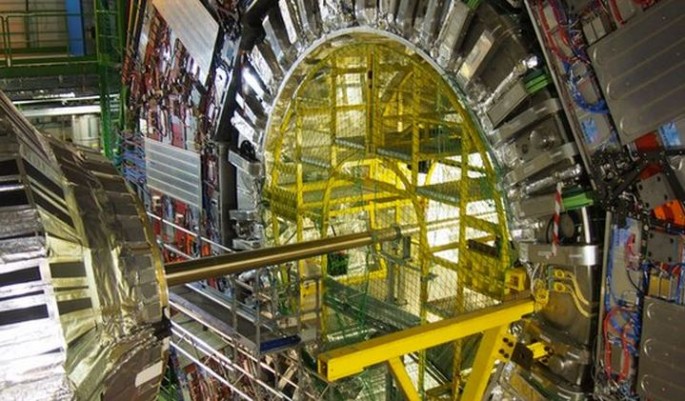The world's largest machine and particle collider, the Large Hadron Collider, resumes operations this week after being knocked out two weeks ago by a simple glitch: a metal fragment in one of its huge magnets.
But seven years ago, two Europeans wanted to knock out the LHC permanently by filing a lawsuit that would have stopped the LHC from ever being turned on.
This little known legal action was filed in a Swiss court in 2008 by retired nuclear safety office, Walter Wagner, and Spanish journalist, Luis Sancho. It sought to stop CERN, or the European Organization for Nuclear Research, from operating the LHC.
The plaintiffs claimed starting the LHC would spark the end of the Earth by triggering either of three irreversible events: a "micro black hole" that would suck-up everything; deadly "strangelets" that would fuse everything or a destructive "magnetic monopole" that would screw-up everything.
In their lawsuit, Wagner and Sancho contended the LHC was capable of generating a micro black hole that would swallow Earth.
"Eventually, all of Earth would fall into such growing micro black hole, converting Earth into a medium-sized black hole, around which would continue to orbit the moon, satellites, the ISS, etc."
Wagner and Sancho were afraid accelerating subatomic particles to 99.99% the speed of light and colliding them would create a flurry of particles, one of which might be a micro black hole that would then proceed to eat-up the Earth and everyone on it.
Physicists at CERN, however, are certain Einstein's theory of relativity makes it's impossible for the LHC to produce a micro black hole. Wagner and Sancho, however, were unconvinced and asked "What if Einstein was wrong"?
No scientist has made or observed a microscopic black hole -- not even the LHC.
"Strangelets" are the hypothetical building blocks of an even stranger (but also hypothetical) substance called "strange matter".
Wagner and Sancho feared strange matter could fuse with normal matter "eventually converting all of Earth into a single large 'strangelet' of huge size," they said in their lawsuit.
Scientists, however, believe these strangelets could actually be the building blocks of mysterious but invisible dark matter that comprises the bulk of the mass of the Universe.
Wagner believed the LHC could create the first ever magnetic monopole that could destroy Earth.
"Such particle might have the ability to catalyze the decay of protons and atoms, causing them to convert into other types of matter in a runaway reaction," Wagner and Sancho said.
In theory, a monopole could destroy protons but its existence is purely hypothetical. CERN physicists, however, said this belief is speculative at best.
And these boffins have a point. A magnetic monopole has never been made in a lab or observed in nature. Its existence was suggested over a century ago by Pierre Curie, husband to Marie Curie.
"The continued existence of the Earth and other astronomical bodies therefore rules out dangerous proton-eating magnetic monopoles light enough to be produced at the LHC," said CERN physicists.
The lawsuit by Wagner and Sancho was eventually dismissed because the men failed to prove a "credible threat to harm", said Yahoo.
But the LHC will keep on searching for those elusive particles that are the reason for being of the Universe. And who knows what exotic - or terrifying - discoveries lay in wait for the LHC?



























